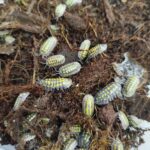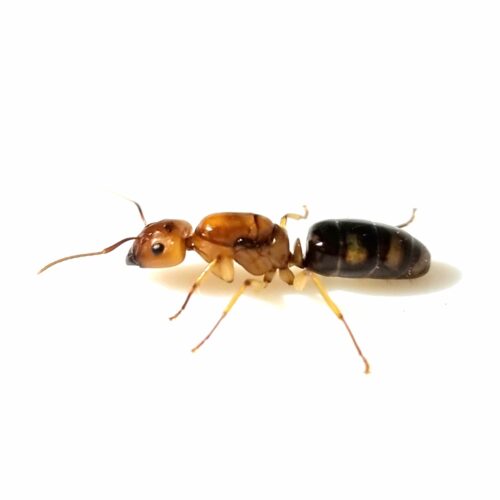
Pseudoponera rufipes
80,00€ – 100,00€Price range: 80,00€ through 100,00€

Armadillidium Gestroi
2,00€ – 15,00€Price range: 2,00€ through 15,00€
Pristomyrmex brevispinosus
60,00€
Pristomyrmex brevispinosus is a small-sized ant, ideal for advanced enthusiasts. Its territorial nature and ability to explore make this species a unique choice. Perfect for an ant farm with tropical conditions. Add some exotic flair to your colony!
SKU:
N/A
Categories: Ants, Exotic ants
Description
Technical Sheet: Ant Pristomyrmex brevispinosus
Scientific Name: Pristomyrmex brevispinosus
Family: Formicidae
Subfamily: Myrmicinae
Distribution
Pristomyrmex brevispinosus is an ant species distributed in tropical and subtropical regions, primarily found in Asia and Oceania. They inhabit forested areas and rural landscapes, preferring moist soils and locations with abundant vegetation.
Physical Characteristics
- Size: Worker ants measure between 3 and 4 mm.
- Color: Typically light brown, with darker tones on the thorax and abdomen.
- Morphology: Compact body with a robust thorax and relatively large mandibles for their size. They possess short dorsal spines, which is reflected in their name ‘brevispinosus’.
Behavior
- Feeding Habits: They are omnivorous, feeding on small insects, plant secretions, and sources of proteins and carbohydrates found in the soil.
- Social Behavior: They form medium-sized colonies and exhibit moderate territorial behavior. The colony structure is led by a queen, who is solely responsible for reproduction.
Habitat and Nest Construction
- Colonies of Pristomyrmex brevispinosus typically build their nests in the ground, often under stones, fallen logs, or in small cavities in the soil. They prefer humid, well-shaded areas.
Care in Captivity
- Temperature: Between 24°C and 28°C.
- Humidity: Moderate, between 60% and 70%.
- Feeding: It is recommended to provide small insects, such as fruit flies or crickets, as well as sugary liquids or diluted honey.
- Nest: They can be kept in plaster or acrylic ant farms, ensuring adequate humidity in the breeding area.
Interesting Facts
- Pristomyrmex brevispinosus is highly efficient in foraging. Its small size and ability to navigate through vegetation allow it to explore areas that may be difficult for larger species to access.
Additional information
| Options |
Colony |
|---|
Related products
Myrmoteras benghammi colony
65,00€
Sold out
Camponotus maculatus subnudus
28,00€ – 48,00€Price range: 28,00€ through 48,00€
Sold out
Select options
This product has multiple variants. The options may be chosen on the product page
Camponotus Mutilarius (Xiangban)
25,00€ – 80,00€Price range: 25,00€ through 80,00€
Sold out
Select options
This product has multiple variants. The options may be chosen on the product page
Camponotus vanispinus
25,00€ – 38,00€Price range: 25,00€ through 38,00€
Sold out
Select options
This product has multiple variants. The options may be chosen on the product page
Camponotus parius
18,00€ – 28,00€Price range: 18,00€ through 28,00€
Sold out
Select options
This product has multiple variants. The options may be chosen on the product page
Camponotus pseudoirritans
15,00€ – 29,50€Price range: 15,00€ through 29,50€
Sold out
Camponotus pseudoirritans Origin and distribution: China Humidity: 50 – 70% Temperature: 24 – 28 ° C Hibernation: no
Select options
This product has multiple variants. The options may be chosen on the product page























